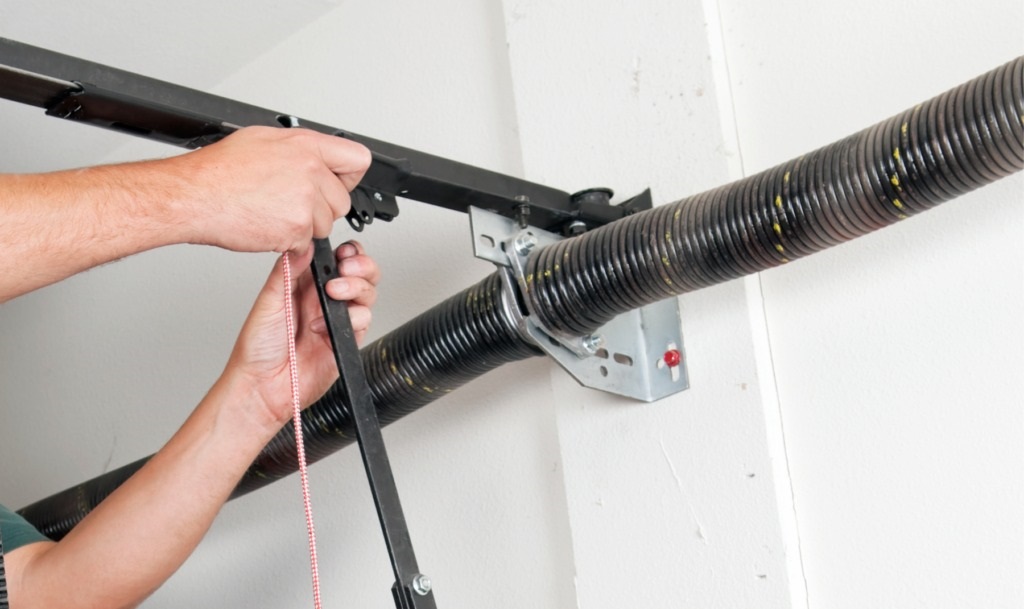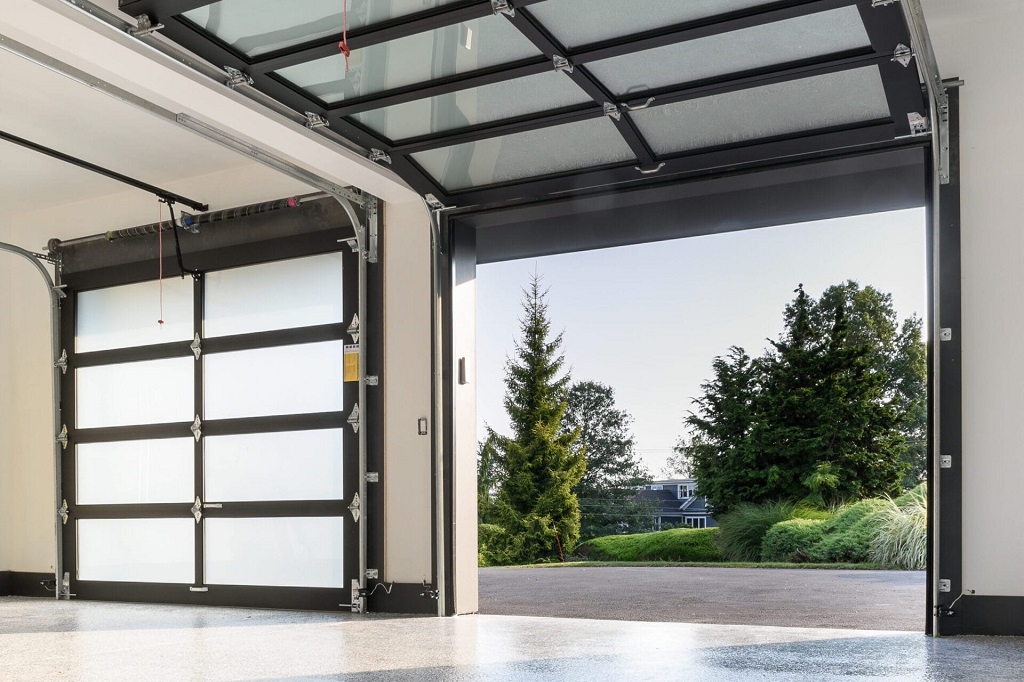Thinking of Replacing Your Garage Door Spring Yourself? Read This First!
Your garage door spring is a critical component that ensures smooth operation, but when it breaks, the temptation to fix it yourself can be strong. Many homeowners wonder, “Can I replace a garage door spring myself?” While a DIY approach might seem cost-effective, it comes with significant risks and challenges. At House Needy, we understand the appeal of tackling home repairs on your own. However, garage door springs are under high tension and require specialized knowledge to handle safely. This article explores the dangers, steps, and considerations of replacing a garage door spring yourself, helping you make an informed decision.
Understanding Garage Door Springs and Their Role
Garage door springs counterbalance the door’s weight, making it easy to open and close. There are two main types: torsion springs, mounted above the door, and extension springs, located along the tracks. These springs endure constant tension and wear out over time, typically lasting 10,000 to 20,000 cycles (about 7-10 years). When they snap, the door may become heavy, uneven, or inoperable. Recognizing the signs of a broken spring—such as a loud bang, a stuck door, or visible gaps in the spring—prompts many to consider a DIY replacement. But is it safe or practical?
If you’re asking, “Can I replace a garage door spring myself?,” you’re not alone. Many online guides, like the one from House Needy, outline the process. However, these steps require precision, specialized tools, and safety precautions. Mishandling a spring can lead to serious injury or property damage. Before diving in, let’s weigh the risks and benefits.

The Risks of DIY Garage Door Spring Replacement
Replacing a garage door spring is not like fixing a leaky faucet. The high tension in these springs makes them dangerous. Here are some key risks:
- Severe Injury: Torsion springs store immense energy. A wrong move can cause the spring to snap, leading to cuts, bruises, or even broken bones.
- Property Damage: Incorrect installation can damage the garage door, tracks, or opener, resulting in costly repairs.
- Lack of Expertise: Without experience, you might misjudge the spring size or tension, causing the door to malfunction.
- Time and Frustration: The process is complex and time-consuming, especially for beginners.
According to a report by the U.S. Consumer Product Safety Commission, garage door injuries account for thousands of emergency room visits annually, with spring-related mishaps being a common cause. Therefore, while DIY projects can be rewarding, this one demands caution.
Can You Replace a Garage Door Spring Yourself?
Technically, yes, you can replace a garage door spring yourself, but it’s not recommended unless you have the right skills and tools. The process involves releasing tension from the old spring, removing it, installing a new one, and adjusting the tension. Each step requires precision. For instance, torsion springs need a winding bar to safely manage tension, and improper winding can cause the spring to break or the door to fall.
Additionally, you’ll need tools like a sturdy ladder, C-clamps, a socket wrench, and safety gear. Without these, the risk of failure increases. If you’re experienced with mechanical systems and confident in your abilities, you might succeed. However, most homeowners lack the expertise to handle this safely.
Why Professional Help Is Often the Better Choice
Hiring a professional offers several advantages. Technicians have the training to handle high-tension springs safely. They also carry the right tools and replacement parts, ensuring the job is done correctly. Moreover, professionals can spot other issues, like worn cables or misaligned tracks, that you might overlook.
Cost is a common concern, but professional services are often more affordable than expected. The average cost to replace a garage door spring ranges from $150 to $350, depending on the spring type and labor rates. Compare this to the potential medical bills or repair costs from a DIY mistake, and the professional route often makes sense.
Steps to Replace a Garage Door Spring (If You Must)
If you decide to proceed with a DIY replacement, follow these general steps with extreme caution. Always consult a detailed guide and prioritize safety.
- Gather Tools and Parts: You’ll need winding bars, a socket wrench, C-clamps, safety glasses, gloves, and a replacement spring matched to your door’s size and weight.
- Secure the Door: Clamp the door to the tracks to prevent it from moving.
- Release Tension: For torsion springs, carefully unwind the old spring using winding bars. For extension springs, disconnect the safety cables.
- Remove the Old Spring: Detach the broken spring from its mounting points.
- Install the New Spring: Attach the new spring and carefully wind it to the correct tension.
- Test the Door: Remove clamps and test the door’s balance and operation.
These steps sound straightforward, but small errors can lead to big problems. For a detailed walkthrough, refer to trusted resources like This Old House, which offers home repair guides.
Safety Precautions to Take Seriously
If you choose to replace the spring yourself, safety is non-negotiable. Here are essential precautions:
- Wear protective gear, including safety glasses and gloves.
- Use the correct tools, especially winding bars designed for torsion springs.
- Never stand directly in the spring’s path while working.
- Ensure the garage door is fully secured before starting.
- Have a partner assist you for added safety.
Even with precautions, the risks remain high. If you’re unsure at any point, stop and call a professional.
When to Call a Professional
Certain situations make professional help the only sensible choice. Contact a technician if:
- You lack the necessary tools or experience.
- The door shows signs of additional damage, like bent tracks or worn cables.
- You’re dealing with a torsion spring, which is more dangerous than an extension spring.
- You feel uneasy about handling high-tension components.
Professionals can complete the job quickly and safely, giving you peace of mind.
Cost vs. Benefit: Is DIY Worth It?
Replacing a garage door spring yourself might save you $100-$200, but the risks often outweigh the savings. A mistake could lead to injuries, damaged property, or a door that doesn’t function properly. Professionals, while more expensive upfront, provide expertise and warranties that protect your investment. Weigh your skills, time, and safety before deciding.
Read More Also: Does Renters Insurance Cover Water Leak Damage? A Comprehensive Guide
Conclusion
Replacing a garage door spring yourself is possible but fraught with risks. The high tension in springs makes them dangerous, and the process requires specialized tools and knowledge. While DIY repairs can be tempting, the potential for injury or damage makes professional help a wiser choice for most homeowners. If you’re determined to do it yourself, prioritize safety, follow a trusted guide, and know when to stop. Ultimately, your safety and the functionality of your garage door are worth the investment in professional service.
Read More Also: Benefits of an Epoxy Floor Coating in a Garage for Rustic Decor
Frequently Asked Questions
-
Can I replace a garage door spring myself if I have no experience?
It’s not recommended. The high tension in springs makes them dangerous, and lack of experience increases the risk of injury or improper installation.
-
How long does it take to replace a garage door spring?
A professional can complete the job in 1-2 hours. A DIY replacement may take longer, depending on your skill level and tools.
-
What tools do I need to replace a garage door spring?
You’ll need winding bars, a socket wrench, C-clamps, a sturdy ladder, safety glasses, and gloves. Using improper tools is dangerous.
-
How do I know if my garage door spring is broken?
Signs include a loud bang, a stuck or heavy door, visible gaps in the spring, or uneven door movement.
-
How much does it cost to hire a professional for spring replacement?
Costs typically range from $150 to $350, depending on the spring type and labor rates in your area.













Post Comment